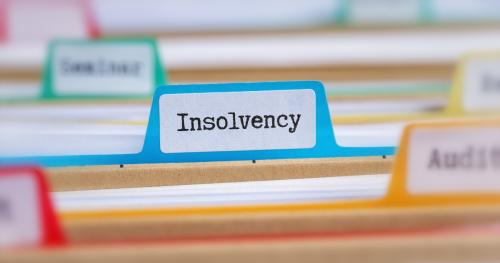 On July 15, 2022, the new crisis and insolvency code (Codice della crisi d’impresa e dell’insolvenza) (the “Crisis and Insolvency Code” or the “Code”) came into force, repealing the 1942 Bankruptcy Law. The Code is the final stage of a process that began almost 15 years ago with an eye to implementing a more modern approach to business insolvency by shifting the focus from business liquidation to business restructuring. It is the same approach that inspired EU Directive No. 2019/1023 on the Preventive Restructuring Framework, which the Code implemented.
On July 15, 2022, the new crisis and insolvency code (Codice della crisi d’impresa e dell’insolvenza) (the “Crisis and Insolvency Code” or the “Code”) came into force, repealing the 1942 Bankruptcy Law. The Code is the final stage of a process that began almost 15 years ago with an eye to implementing a more modern approach to business insolvency by shifting the focus from business liquidation to business restructuring. It is the same approach that inspired EU Directive No. 2019/1023 on the Preventive Restructuring Framework, which the Code implemented.
An overview of major changes under the Code
To encourage the rescue of businesses through restructuring, the Code does four things:
- First, it introduces a number of measures intended to ensure that a distress situation is detected at a very early stage, allowing the company to address its problems quickly. For example, it requires a company to set up a governance system that issues “early warnings” to indicate that the company is under pressure long before that pressure turns into a financial crisis or full-fledged insolvency. Such red flags include things like salaries unpaid for more than 30 days in excess of 50% of total salaries, invoices unpaid for more than 90 days in excess of 50% of total debts to suppliers, outstanding financial debts overdue by more than 90 days in excess of 5% of total financial debts, and so on. The Code also requires that certain “qualified creditors” (such as banks and public agencies) report to the company and its controlling bodies (such as internal auditors) circumstances that indicate a state of potential distress so that the company can take immediate action and apply for voluntary negotiated settlement proceedings (“composizione negoziata della crisi”) (see below).
- Second, it provides voluntary negotiated settlement proceedings (“composizione negoziata della crisi”) designed to assist a company in addressing its financial difficulties at a very early stage. If settlement is not successful, the company may still access traditional, more invasive insolvency tools (rescue plan, debt restructuring agreement sanctioned by the insolvency court, voluntary creditor arrangements sanctioned by insolvency court, insolvency liquidation).
- Third, the Code expands the reach of restructuring tools such as sanctioned debt restructuring agreements and voluntary creditor arrangements (“concordato preventivo”). This has been done by either making it easier for the debtor to have access to such tools (for example, lowering the quorum required to approve debt restructuring agreements) or by expanding their effects (for example, providing a sort of cram-down for debt restructuring agreements). In addition, the Code introduced a new tool (a rescue plan sanctioned by the court: “piano di ristrutturazione soggetto a omologazione”) to implement Art. 11(1) of EU Directive No. 2019/1023 on the Preventive Restructuring Framework, recommending the adoption of a cross-class cram-down.
- Finally, the Code recognizes the existence of group insolvency and provides specific tools to address such insolvency in a more efficient way. For example, group companies may file a joint application for debt restructuring agreements or voluntary creditor arrangements. Likewise, in case of insolvency, group companies may file a joint application to start insolvency liquidation proceedings for all insolvent companies.
Early thoughts on how the Code has worked so far
The Code took effect on July 15, 2022. It is far too early to grasp the concrete impact of the new law and to draw conclusions as to whether or not the goals of the reform have been reached. Furthermore, the insolvency industry has been particularly quiet for the last two years, as a result of support measures adopted by the government during the Covid-19 pandemic.
The only significant data available regard voluntary negotiated settlement proceedings (“composizione negoziata della crisi”), effectively in force since December 2021 (in other words, they were enacted before the Code). As mentioned above, these proceedings are an out-of-court tool designed to help companies under pressure overcome temporary difficulties. A debtor is aided by an expert appointed by the local chamber of commerce who acts as a facilitator. The proceedings may result in a debtor making one or more agreements with its creditors (suppliers, banks, and so on) or accessing other insolvency or quasi-insolvency proceedings, including a simplified voluntary creditor arrangement (“concordato preventivo semplificato”). In certain scenarios, a debtor may apply for one of several interim measures, including a stay of proceedings and a prohibition on terminating or suspending pending agreements.
Data show that so far the use and impact of this new tool is somewhat limited. Out of 557 applications filed as of January 5, 7.3% were rejected (presumably for lack of prospects for business continuity) and only 27.3% (143) were concluded (which means that the vast majority of the applications are still pending). Out of the 143 proceedings concluded, only eight were successful (meaning they ended with the business being restructured through one or more settlement or debt restructuring agreements or other forms of negotiated settlement), and the other 135 failed. This is a pretty modest outcome considering the expectations.
Still, this does not necessarily mean that negotiated settlement will fail to prove useful in addressing early restructuring of distressed businesses. It always takes some time for new legislative measures to be understood fully and for their potential to be exploited fully. Entrepreneurs often fail to acknowledge that their businesses are under pressure and wait too long before acting so that by the time they do act it is often too late and traditional insolvency proceedings (and protective measures) are the only option.

